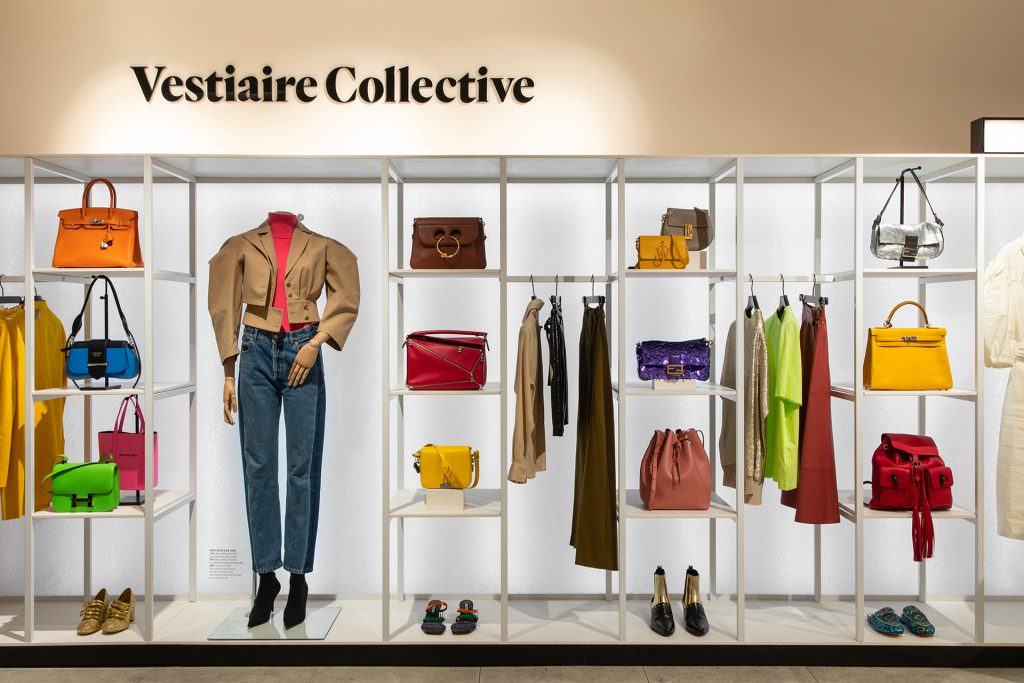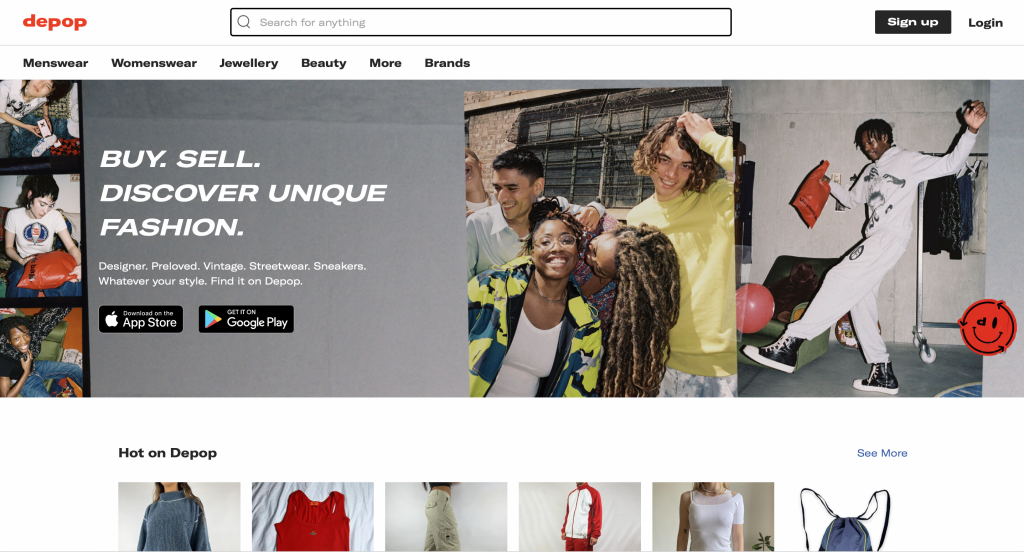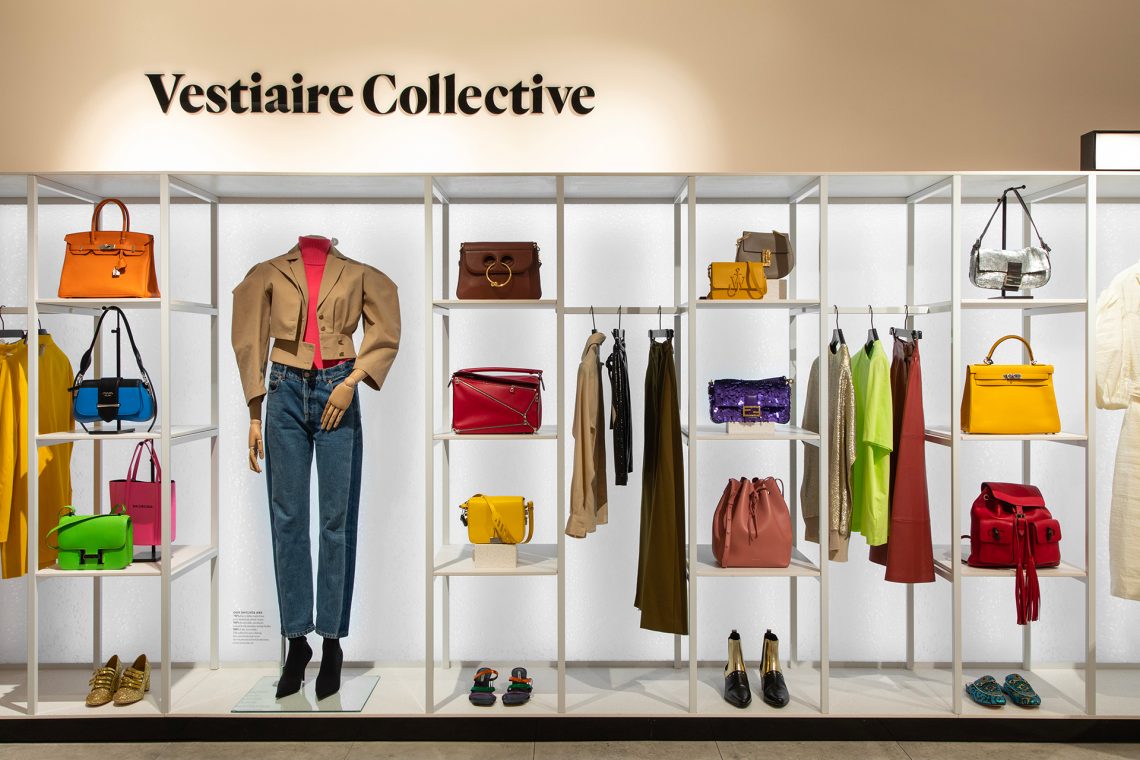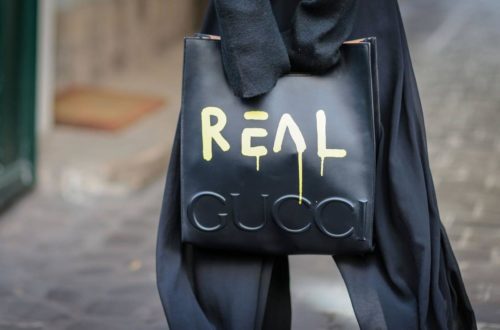Buying vintage clothing is surely a unique experience, a special feeling that comes with “giving a second life” to clothing pieces, wondering how many it’s already lived. There is, however, also a lot of doubt in the buying process of secondhand clothing regarding the authenticity of the piece and the convenience of its price. How to be sure that it’s not a fake? How do we know it’s the most affordable option?
What used to be a manufacturing hub for French fashion and has by now become the center of authentication expertise, Lille, France, is today home of the headquarters of luxury online reseller Vestiaire Collective, where the lives of knock-off pieces are cut short by experts, preserving the legitimacy of the secondhand supply chain.

However, when it comes to product authenticity, there is always a risk.
According to the Organization for Economic Co-operation and Development (OECD), China, Hong Kong and Singapore make up for two-thirds of global counterfeit exports. Vestiaire has stated that more fakes have been identified in the Asian region than in Europe and the US. By now, two inspectors from Hong Kong have joined the team to evaluate items from all over Asia for quality and authenticity before sending them to buyers. Also, certain measures have been taken to prevent the entrance of fakes in the market: anyone who submits one for sale receive a first warning and is then banned from the platform.
Sellers have also gotten more familiar with retaining evidence of their purchase. More people have realized that items can have second lives and are saving packaging and receipts to earn better resale pricing. This approach will be critical to Vestiaire’s next phase of growth: direct shipping in the region where buyers can choose to skip the authentication process and receive their product directly from the seller. Fanny Mozaint, president and founder of Vestiaire, has called this “just the beginning of what we call the Asian expansion”.
Another platform which is widening its place in the vintage industry as we speak, is none other than Depop itself. The peer-to-peer marketplace was acquired by Etsy in 2021 for $1.6 billion, and, when talking about vintage, it must not go unmentioned. Depop’s CEO Maria Raga enlightens us as to what is it that makes Depop different from what we would call traditional fashion e-commerce: “Depop is not just a place where you come to find an item that you want, it’s a place where you come to discover other people.”

But how is the industry actually doing? We know one thing, it’s here to stay.
The global secondhand fashion market is worth approximately $130 billion, with major markets like the US expected to maintain their double-digit growth at least through 2025, as stated by BoF Insights. Several factors determine this phenomenon and give reasons as to why investors are keeping a bullish attitude towards the industry: multiple reinforcing drivers of consumer demand, the market’s remarkable growth potential and the growing realization amongst major fashion players that resale is not leaving anytime soon.
Aspects such as platform sophistication, younger generations buying and selling more vintage, reduced stigma on secondhand clothing with resale becoming more mainstream, limited edition drops and the sustainability that comes with turning to secondhand pieces rather than new firsthand consumption, are all demand-driving factors for resale which consistently grow and strengthen one another.
Also, according to BoF Insights consumer surveys from the US, UK, France, and Germany, 50% to 60% of general consumers have purchased secondhand fashion before, and only 15% are not willing to buy secondhand fashion at all, suggesting that most fashion consumers are an addressable target for secondhand fashion. Regarding inventory penetration, BoF Insights estimates that only 5% to 7% of total fashion inventory which is in “resaleable” condition is actually being resold by consumers. Meaning that there could be $2.1 trillion worth of fashion inventory which is collecting dust in closets around the world — a good reason for corporate and investor bullishness, indeed.
However, long before the days of Depop, Vestiaire, and Etsy, there was one person who knew how to appreciate both vintage and new fashion: the incomparable Carrie Bradshaw.

Vintage fashion has been part of “Sex and the City” since the series’ pilot, so it obviously couldn’t miss in HBO’s reboot “Just Like That”. Costume designers Molly Rogers and Danny Santiago spent days and nights in Miami vintage stores and Manhattan storage lockers to give Carrie the look that made her the style icon she was, and still is today. However, vintage clothing goes beyond the “Sex and the City” universe on both the big and small screen. Images went viral of HBO’s hit show “Euphoria”, where Maddy (Alexa Demie), while babysitting for a wealthy couple, plays dress up with the wife’s stunning collection of archival Halston, Chanel and Thierry Mugler. “If you want your character to have depth and texture and color, there are a lot of things that just aren’t being produced anymore”, said Ian Drummond, owner of the Toronto-based vintage rental house the Ian Drummond Collection, showing how vintage also helps fill a void for costume designers.
We’re all slowly, collectively, finally, starting to leave behind the stigma of “used” and “dirty” clothes associated with secondhand items and for teenagers today, thrifting has become the norm: on Depop, 90% of active users are under the age of 26. The importance of teenagers thrifting and not following up on the latest unsustainable fashion trends which appeal to the constantly changing standard of what is “fashionable” and “trendy”, must not go unnoticed. This is because it does not simply account for buying something more “aesthetic” for their Instagram feeds and TikTok accounts, rather, it’s the subconscious act of recognizing what is valuable, preserving something from the past which has a history, and giving it a new life not only now, but for the generations ahead.
By Tesa Djordjevic






